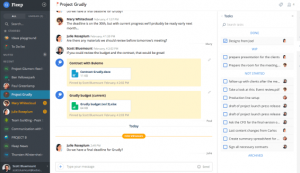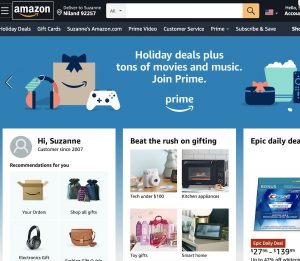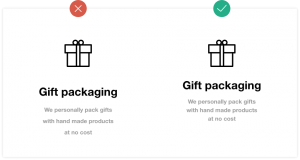— July 28, 2019
In the beginning, the coolest thing about social media was the ability to reach thousands of people, maybe even millions, for free with just one click. Fast forward to today, where everyone’s trying to make themselves heard on all platforms, creating so much noise that only about 10 percent of your audience ever sees your posts.
Why pay for something that was once a free and easy way to promote your brand? According to March’s Director of Social Strategy Amanda Fountain, it’s an effective way to cut through the noise on social and can be a cost-effective option if you implement smart strategies. Amanda ran through the basics, including different types of paid posts and the pros and cons of specific social platforms.
Q: What is the difference between organic and paid social media?
Organic posts are everything you publish on social feeds (without money behind it) as part of a regular content strategy. Meanwhile, paid posts are ones that you really want to amplify and have specific targeting and budget behind it, so the platform pushes it out to audiences. An organic post will always show up in your content feed; a paid post may or may not appear in your content feed.
Q: When is it worth putting money behind a post?
When you have a very specific goal attached to a post, putting money behind it is really helpful. You could be trying to get registrations for a webinar or driving people to a landing page for lead generation. Marketing-focused posts like these are looking for a specific action, so they need to work a little bit harder.
From the pure PR side where the goal is brand visibility, it’s harder and harder to combat newsfeed algorithm changes on social platforms. Putting a little spend behind posts counters these algorithms and ensures brand recognition by making sure you’re seen by people who already follow you and expanding reach to audiences that aren’t following you yet.
Q: Obviously social media channels become more and more saturated with time, but why is paid social more important now than it was five years ago?
Across all platforms, there’s just more content than there was five years ago. More people using social, more publishing, and more talking. There are 500 million Tweets posted per day. With that crazy volume, it’s hard for people to see it all. Most people aren’t looking at Twitter, LinkedIn or Facebook every second of every day. That means if you post something once, there are thousands of other tweets posted in the same time span.
Q: What is a boosted post?
A boosted post is specific method for amplifying and promoting a post. “Boost” is actually a great name because it’s so descriptive of what happens. When you boost a post you’re just giving it an extra push to make sure it’s visible for anyone who is currently following you. You can add targeting to try to get within specific followers’ networks as well. It’s a great option to ensure your current audience sees your content.
Q: What is a dark post?
Dark posts are used for more specific goals. For example, if you have an event in Tokyo, everyone across the globe doesn’t need to see that event, because it’s not relevant to them. If you attach targeting to a dark post specific to Tokyo, only people in Tokyo will see it. The post doesn’t show up in your regular feed, which is good because it only appeals to one segment of your audience.
Dark posts are powerful for advertising purposes and AB testing, or split testing. Setting up an AB test allows you to work with algorithms to put different messages or images in front of your audience. Using dark posts this way allows you to constantly test content, without inundating the audience with four posts saying the same thing in slightly different ways in the regular content feed. Once you find which types of messages work well, you can more confidently craft organic posts.
Q: Among the top social platforms, is one more helpful than others?
All of the platforms have paid options but knowing which one is best to use depends on who the audience is. For example, with a young audience in the consumer space, Snapchat might actually be the way to go. Similar audiences are also on Instagram, where you can do ads as stories. There’s been an interesting shift lately as more business and tech companies are starting to get on these younger, trendier platforms with paid promotions as well.
What’s most helpful though is knowing where your audience is and meeting them there. Don’t avoid a platform because you think it’s not going to work or might be too expensive. If you know your audience is there, it’s almost always worth the cost to try it out.
Q: What are the top pros and cons of Facebook, Twitter and LinkedIn?
Facebook’s targeting options are broad and there are a lot of options. This is good if you have specific demographic information about your audience—household income, age ranges, kids at home, interests, basically a deep-dive on everything about your audience’s entire life. But if you don’t know as much about them, either because it’s a wide variety of people, or what you know doesn’t align with the information Facebook gathers, it’s harder to target. For example, a consumer brand looking to reach moms will typically have an idea of the age range, some interests and household income. A company looking to reach IT managers may not know as much about their personal lives beyond an age bracket.
Twitter can be a wild card. You’re limited to targeting people based on how much information they’ve filled out on their profile and how they interact and engage on the platform. This is challenging because Twitter is a place where people are often loose or funny with descriptions of themselves. They might put “Beantown” as their location rather than Boston. There’s no targeting option for Beantown because that’s not a real location. You can’t get as granular, but it’s great if you’re looking for a broad audience with a broad interest.
LinkedIn is the most specific targeting based on seniority, title and groups, making it a great option for B2B. The flip is that it’s a little harder to target larger consumer groups. It can get expensive very quickly for anyone who is looking reach a broad audience, but it’s worth it to try for more niche and narrowly focused audiences.
Q: How do you measure the results of each campaign?
It’s tough. There’s always the question of “How does my campaign compare to the average?” But comparing to the “average” on each platform doesn’t make sense, because you would be comparing yourself to every company that has ever advertised on the platform. A company making a heart rate sensor wristband is going to have different results than a company who makes smart cars or mobile wallets. They’re not trying to go for the same audience, so trying to compare results can be disappointing. The better approach is to benchmark after your first social campaign and keep improving from there.
For action-oriented campaigns: If your initial campaign cost $ 100 per click, you need to ask, “Did that click actually convert to a lead worth $ 100?” If so, great job! You crushed that campaign and can try to do even better next time. But if you know it normally only costs $ 25 to get a lead, you need to adjust future campaigns.
For brand awareness campaigns: If you know Twitter normally gets 1,000 impressions, and adding spend now gets 4,000 impressions, that’s a great jump. Gaining, retaining and engaging more followers is also a big win.
Q: Do you think a social campaign could be successful without paid posts?
Every good social strategy should have a paid component, but you don’t need to put it behind every post. Save your paid budget for campaigns that need to make a bigger impact. Overall, social has moved to a quality over quantity approach. It’s not about posting everything; it’s about posting the right things for your audience. Adding money to promote makes sure your audience gets to see it in a noisy and crowded space.
Digital & Social Articles on Business 2 Community
(41)





